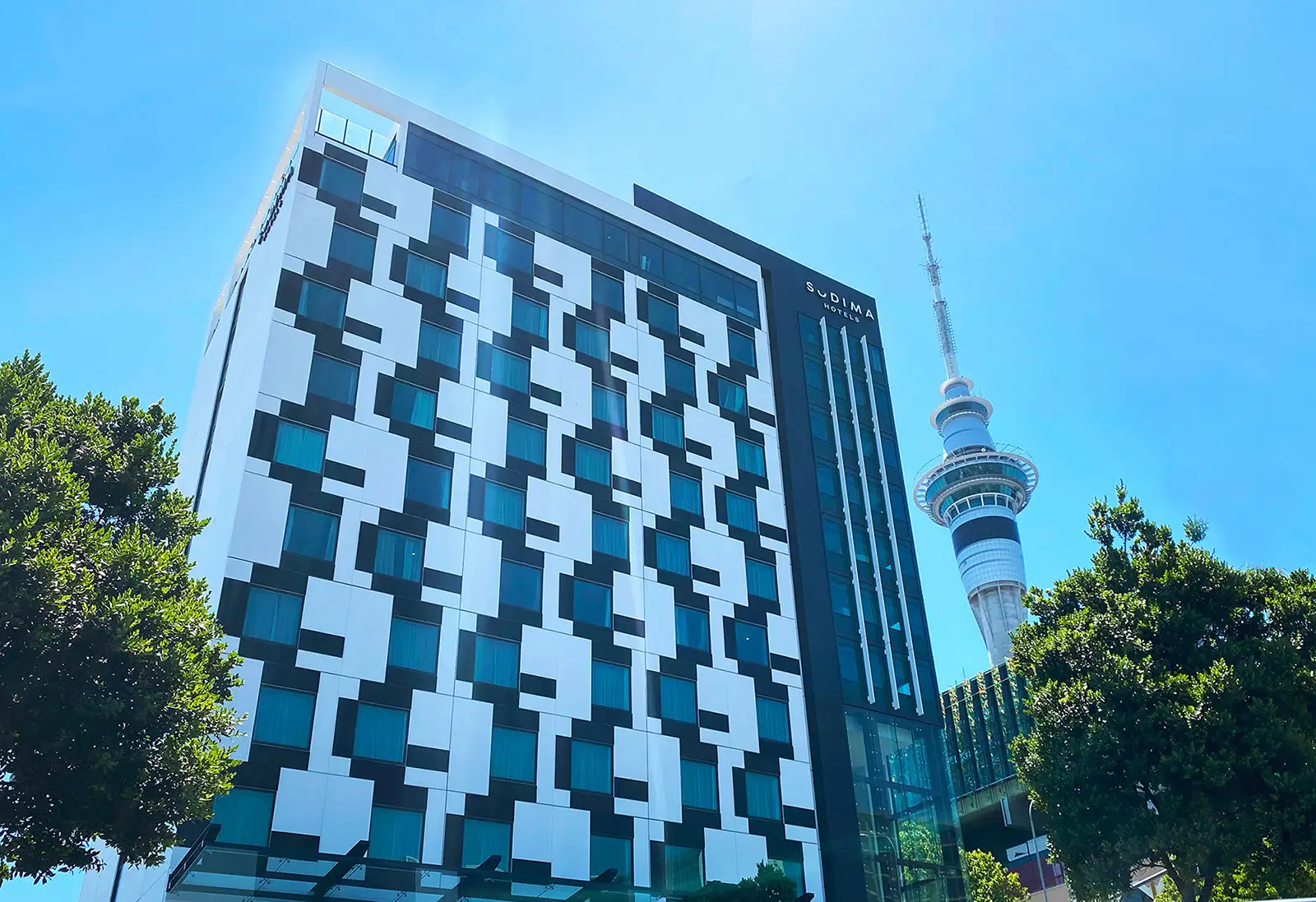In a move to being energy efficient, Executive Chef Stuart Marsden and his team at East embarked on a journey to integrate induction wok cooking into their high-performance kitchen.
This case study explores how one restaurant's transition from gas to electric wok cooking not only reduced energy consumption but, surprisingly, enhanced the flavour of their dishes.
Project summary
| Project: | Induction wok |
| Location: | East Restaurant at Sudima Hotel, Auckland |
| Timeline: | 2024 |
| Unit Installed | |
| Model: | Berner BWBK9 |
| Type: | Single-Unit Induction Wok |
| Supplier: | Berner Professional Kitchen Equipment |
The initial installation revealed several practical limitations in the default configuration. Traditional gas woks rely on water cooling seals and are raised for ergonomic use. The induction unit came as a flat surface with a central cavity — unsuitable for high-volume wok operations in a commercial kitchen.
Though initially hesitant, Marsden's experience with the electric wok has evolved into a story of adaptation, innovation, and unexpected culinary discovery.
Aligning energy efficiency with kitchen functionality
“Our goal was to upgrade equipment while maintaining performance standards and aligning with our sustainability strategy,” says Stuart Marsden, Head Chef at East. “The wok is integral to our offering, especially in an Asian kitchen, so we needed a solution that supported both flavour and function.”
The move toward induction followed a broader shift already underway within the hotel group. “Energy and emissions reduction is embedded in our business model,” says Kanika Jhunjhnuwala, Chief Sustainability Officer, Sudima Hotels. “We’ve been tracking emissions for over a decade, so equipment decisions are always data-informed. We viewed the induction wok not just through a performance lens, but also from a return-on-investment standpoint – and the numbers were compelling.”
To validate the investment, energy monitoring meters were installed on both the existing gas unit and the new induction wok to capture real-time consumption data.
A new flame
Despite the environmental rationale, Marsden was initially sceptical about performance.
“One option was to go with electricity. I was a bit dubious at the start because of the flavor,” he admits.
In traditional Asian cooking, the flame doesn’t just cook food — it’s part of the performance. The idea of removing that visceral, high-heat contact seemed, at first, unthinkable.
“It’s not getting kissed by the flame, like when you're tossing the wok,” Marsden explains. “It’s more char caramelisation, so it’s a bit stronger.”
However, a series of blind tastings surprised the kitchen team. Dishes prepared using the induction wok were perceived as having deeper charred flavour than their gas-cooked counterparts. “We were genuinely surprised by the results – it wasn’t what we expected,” Marsden says.
Customising the induction wok for the kitchen
Integrating an induction wok into a high-demand kitchen required more than plug-and-play installation. Traditional commercial wok setups rely on elevated platforms, water seals, and efficient cleaning systems — none of which were present in the induction unit's default configuration.
To ensure full compatibility, the East kitchen team collaborated with design specialists to develop a bespoke solution featuring:
- a back drain to catch food and cleaning water
- a sealed system to keep water and electronics safely apart
- a top shelf for soy, sugar, salt, and other staples
- a specially routed water hose approved through the manufacturer.
These design modifications transformed the induction wok from a conceptual upgrade into a fully functional, high-throughput appliance.
Resistance and realignment
Adapting to a new cooking method involved overcoming operational inertia. “The muscle memory with gas is strong – you control the flame with your knee, lift the wok off the heat. Induction works differently,” Marsden says.
Initially, the induction wok was reserved for steaming applications, where it outperformed expectations. However, incorporating it into stir-fry operations demanded hands-on training and operational patience. “It took trial and error. Early on, dishes were overcooked under pressure. But gradually, we adapted,” Marsden says.
Peer collaboration also played a key role. Consultation with chefs experienced in induction cooking helped accelerate the learning curve. “Once the team experienced the quality firsthand, perceptions began to shift,” Marsden says. In some cases, gas supply was temporarily disabled to encourage reliance on the new system.

Planning for long-term energy efficiency
Sudima Auckland City is one of the newer properties, having opened in 2020. But it is already benefiting from years of experience, especially as the company’s Energy Transition Plan matures.
“Our sustainability strategy has evolved quite a lot as we’ve built up more knowledge,” Jhunjhnuwala says. “We now have transition plans for some of the hotels, which help us identify the low-hanging fruit — what to do first, what delivers the biggest emissions reductions, and where we’ll get the best return.”
The induction wok project was a natural fit within this structured approach. Monitoring equipment was installed to compare real-time usage data, and financial modelling indicated strong ROI potential.
“We looked closely at the numbers, and even in the early stages, it justified the investment,” she says.
Looking ahead
For Marsden, the adoption of the induction wok marks the beginning — not the end — of East’s electrification journey. “We still have one gas wok in use, but as it ages, we’ll likely transition that too. The same goes for our six and eight burner stoves.”
Today, the induction wok is used across all services — from high-heat stir-frying to breakfast preparation and large-batch steaming. Its ease of cleaning and consistent performance have made it a core part of daily operations.
Jhunjhnuwala highlights the importance of strategy in delivering results. “Having a clear plan gives us visibility into what’s worth upgrading now, where the biggest gains are, and how to phase in future improvements.”
Sudima’s data shows that kitchen and heating operations are among the highest-emitting functions in its buildings. “As older assets reach end-of-life, we’re not patching them up. We’re replacing them with energy-efficient alternatives,” she says.
Advice to others
- Be curious, be brave — Be open to trying something new. Have an open mind and let the results speak for themselves.
- Evaluate replacement timing — If equipment is nearing the end of its lifespan, consider induction. It’s more efficient and more sustainable.
- Abandon perfection and adapt — Technology doesn’t need to be perfect from day one – it needs to serve the purpose and be adabtable.
Custom Modifications
To make the unit serviceable in a high-intensity setting, the team implemented the following key modifications:
- Encasement frame — Designed to catch overflow water, protect electric elements, and mimic the ergonomics of a raised gas wok setup
- Drainage system — A rear-mounted drain to collect food particles and water without compromising electrical safety
- Utility shelf — Integrated for easy access to condiments (soy, sugar, salt, etc.) during rapid-fire cooking
- Water pipe hose — Fitted through the manufacturer for proper cooling and cleaning functionality
- Multi-size wok support — Designed to support two wok sizes, including an extra-large wok for steam-based service
These customisations ensured the induction wok was not only functional, but safe, hygienic, and integrated into East’s workflow.
Read next
-
Rooftop solar with no upfront investment
How Sudima Hotels is getting the benefits of solar energy without the risk of long-term investment.
- Case study
- Solar energy
- Decarbonisation
-
Cool beans – For Kōkako Organic Coffee Roasters the future of coffee is low carbon
Kōkako Organic Coffee Roasters is at the forefront of a low-emissions coffee roasting sector in Aotearoa.
- Case study
- Decarbonisation
-
Energy saving mode: Samson Corporation’s journey to net carbon zero building management
Property investment company Samson have transformed Parnell’s Axis building from a chocolate factory to a mixed-use, low emissions space.
- Case study
- Decarbonisation
- Co-funding


